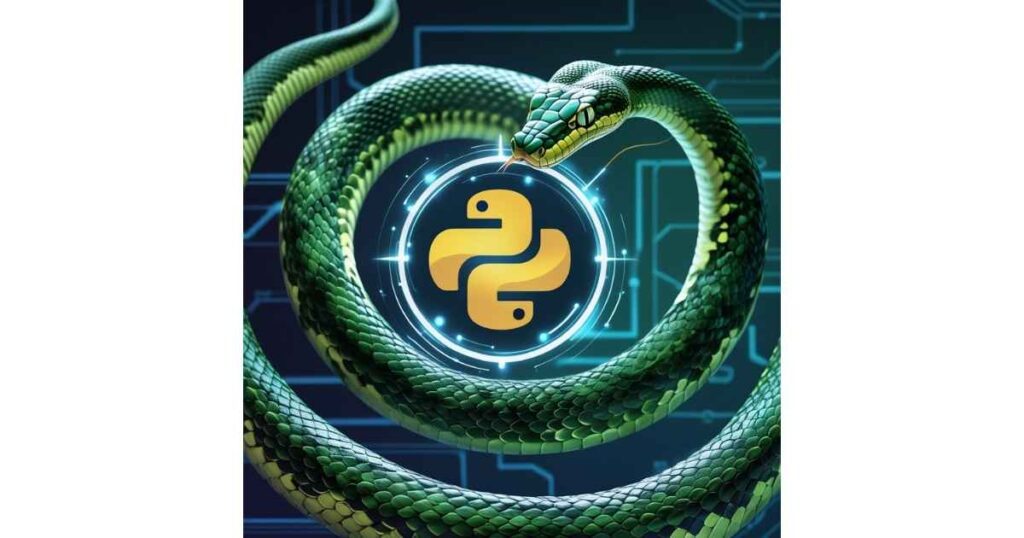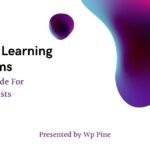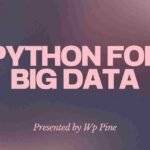In the diversified world of programming languages, Python shines like a grand authority because it is an exceptionally simple, versatile, and efficient tool that persuades developers with its uncluttered and readable syntax and a staggering wealth of libraries.
This article discusses Python’s nature, explores its applications’ diversity, and analyzes why it remains so popular among programmers.
Demystifying Python
Python is an interpreter language intended for the highest programming level. Its code focuses on readability and simplicity. Guido van Rossum conceived it in the late 1980s with the objective of creating a collaborative and efficient programming environment.
Python’s elegant and concise syntax enables one to express ideas in fewer lines of code, which improves productivity since very little time has to be spent on development. A benefit of using indentation via space characters is the code uniformity effect, which makes it aesthetically pleasing and easy to follow. The reason why the use of Python would appeal to programmers at all levels is that:.
The Versatility of Python
One of the main attractions to Python is its versatility, and while the label is appropriately termed ‘Swiss Army knife of programming languages,’ it has made quite a reputation for itself by seamlessly embracing virtually all domains.
Whether it is web development, data analysis, scientific computing, or artificial intelligence, Python has always delivered, easily adapting to the needs of each stream. This adaptability originates from its design philosophy, which emphasizes clean, modular, and readable code. Such traits not only streamline development but also make it easier to collaborate, further solidifying Python’s status as a favorite among developers.
Fields of Application
1. Web Development: This is possible with the powerful web frameworks of Python, such as Django and Flask, which help developers develop robust applications with a nice user experience. Scaly, usable, and speed are some of the qualities for which those frameworks were made to develop web applications very rapidly without losing quality. Therefore, Python is mainly used in developing sites, APIs, and web services, so it plays such a dominant role in web development.
2. Data Science and Analytics: Deep libraries of NumPy, Pandas, and Matplotlib make Python unique in data science and analytics. Its immense data manipulation, analysis, and visualization capabilities make it invaluable to data scientists and researchers. When paired with interactive environments like Jupyter Notebook, Python becomes indispensable for any data scientist, statistician, or researcher to draw insights from complex datasets efficiently and precisely.
3. Machine Learning and AI: Its most promising applications lie in machine learning and AI. TensorFlow, PyTorch, and Scikit-learn have extensive functionality libraries for building, training, and deploying the models. More mathematical notation in writing code brings it closer to being feasible. Due to this, AI enthusiasts, researchers, and professionals have taken the step to absorb Python as the core of the AI revolution.
4. Automation and Scripting: Python is an excellent tool for its simplicity and flexibility. From automating routine workflows and file handling to integrating easily with APIs, Python enables developers to achieve efficiency with very little effort. Its clear syntax and rich standard library make it possible to automate tedious tasks easily and highly efficiently.
5. Game Development: For game development, libraries like Pygame cater to hobbyists, and all can create 2D games with this library quite easily. Although Python certainly does not compare with other languages in raw performance for high-end games, its simplicity and ease of use act as an accessible barrier to hobbyists and beginners. In the past few years, it has been popular among those exploring game development as a creative outlet.
6. Scientific Computing: One of the major contributors to scientific research has been Python, through libraries like SciPy; it allows conducting complex mathematical and scientific computations and simulations and analyzing data in some specific disciplines, such as physics, chemistry, and biology. Being able to tackle complex problems with precision, efficiency, and resultant accuracy and reliability makes Python a cornerstone in the scientific community.
7. Cybersecurity: Python is widely used in cybersecurity because it can automate various tasks and develop custom-built tools. Security professionals use a large number of libraries within Python for penetration testing, vulnerability assessment, and network monitoring. Its flexibility and ease of use make Python invaluable for developing scripts and utilities tailored to specific security needs.
Why Python Reigns Supreme
Python has enjoyed the most extended duration at or near the top for several reasons that will solidify its rank within the tech world as one of the most dominant programming languages:
Readability
Python’s syntax is clean and concise, using indentation to structure code. Consequently, it is very readable and maintainable. The structure resembles human language, so developers can understand even complex or large amounts of code, regardless of size.
Extensive Libraries
Python has a rich and extensive collection of libraries and packages. These ready-built tools range widely from web-developing applications to machine learning. This saves developers much time and guarantees optimal functionality when solving many problems.
Active Community and Support
A vibrant and active community of developers, researchers, and enthusiasts works to help back the Python language. The community collaborates by contributing to open-source projects, providing tutorials and articles for gaining knowledge, and offering assistance on forums like Stack Overflow and GitHub. Such a platform enables innovation and promotes guidance for new users.
Cross-Platform Compatibility
As a platform-independent language, Python allows code written on one operating system to run uninterrupted on others with minimal adjustments. This flexibility reduces compatibility concerns and simplifies the deployment of applications across diverse environments.
Easy-to-learn Learning Curve
Python’s syntax is very simple, intuitive to understand, and ideal for a beginner. The fundamental programming concepts are presented clearly so that the learner can grasp the basics of coding. Indeed, Python has advanced features that cater to professionals, giving it the ability to grow with expertise.
Key Outcomes
In conclusion, Python stands out in the programming landscape for its unparalleled versatility, elegant syntax, and the incredible support of its thriving community. Indeed, whether it is web development, artificial intelligence, or data science, Python continually transforms complex challenges into manageable solutions with exceptional simplicity.
In this increasingly complex world of technology, Python shines out as more than a mere language; it’s a force to reckon with in innovation across industries. Its rich ecosystem empowers developers and businesses alike, helping them produce breakthroughs that seemed impossible before.
Such is the enduring popularity of the programming language, which has profound impacts and great potential for the future. As this technology advances, so will Python, who is always set to be on the frontlines, inspiring minds and shaping the futures of years to come.
Further Reading and Resources
Here are some additional reading resources to deepen your understanding of Python and its applications:
Books
- “Automate the Boring Stuff with Python” by Al Sweigart: An excellent resource for beginners looking to use Python for everyday automation tasks.
- “Python Crash Course” by Eric Matthes: an excellent guide for beginner programmers to learn Python using practical projects.
- “Fluent Python” by Luciano Ramalho: Perfect for experienced developers who want to master Python’s advanced features.
- “Introduction to Machine Learning with Python” by Andreas C. Müller and Sarah Guido: A gentle introduction to machine learning using Python libraries such as Scikit-learn.
Online Tutorials and Courses
- Coursera: “Python for Everybody“ by Dr. Charles Severance—an introductory course on Python programming.
- edX: “Introduction to Python Programming“ by Microsoft—learn the basics of Python in a structured format.
- FreeCodeCamp: Offers a variety of free Python tutorials for all levels.
- Real Python: A platform with in-depth Python tutorials and coding tips.
Official Documentation
- Python.org: The official Python documentation is a goldmine of information for understanding Python’s syntax, libraries, and best practices.
Communities and Forums
- Stack Overflow: Find answers to specific Python-related questions.
- Reddit: Subreddits like r/Python and r/LearnPython are great for discussions, tips, and resource sharing.
- GitHub: Explore Python-based open-source projects to gain practical experience.
Specialized Learning Resources
- Kaggle: Python tutorials focused on data science and machine learning projects.
- PythonAnywhere: A platform to practice Python coding directly in a web-based IDE.
- A Beginner Guide to Machine Learning: The Fascinating World of Machine Learning
- Take a look at the comparison: Machine Learning Vs Meta Learning Explained




Pingback: Django vs Flask: Which Framework is better for you?
Pingback: Django vs Flask vs FastAPI: Which Is Better For You?
Pingback: Data: The Crude and New Oil of the Digital Age - WP Pine